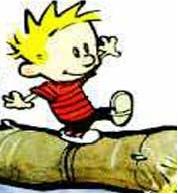Apur Sansar (The world of Apu)
Ray hadn’t initially thought of making a trilogy, but when he was asked this question after “Aparajito” was shown in some foreign film festival, he gave it a thought. Novel surely went ahead with Apu’s life, so could the movie. Again, the movie had a lot of cinematographic opportunities with several outdoor shootings involved in Kolkata, a nearby village and a location in some hilly central region of India. But before shooting Apur Sansar, he made a couple of more movies, Jalsaghar and Paras Pathar, and they did reasonably well in Bengal.
Apur Sansar begins with Apu struggling in Kolkata to find a job. In spite of having a good academic record, he finds it difficult to find a good job and has to live on meager wages he managed by tutoring students. But his love for literature and dreams of being a successful artist are still alive and he begins writing a novel. But soon he meets a pleasant accident in form of invitation from his college friend Pulu to his cousin’s wedding. Apu decides to attend the marriage as a guest, but the destiny creates a situation that forces him to marry Pulu’s cousin Aparna out of sympathy for her tragedy. Marriage transforms his life, he’s happier and more organized and his love for Aparna grows continuously. Then sudden death of Aparna during childbirth completely devastates him. He even thinks of suicide, and blames his son for being the cause of his wife’s death. He wanders across the country searching for some relief in nature and after sometime takes up a job in mine. Meanwhile his son, who has now grown into a small kid, continues to live with his maternal grandparents. Pulu tries to convince him to take his son back into his life and assume the roles and responsibilities of being a father, but Apu tries to disregard him. Finally, realizing his mistake he returns back to his son and persuades the kid to come with him with an emotional ending.
The movie is well integrated to the first two of trilogy. The train and the railway tracks are again used as superb cinematographic symbols that signify Apu’s pursuit for modernity. The riverside village, windows and the background songs are used well to integrate intra-movie sequences and realizations of Apu. Death of Aparna is severe shock for Apu and he tries to kill himself. The scene when Apu decides to throw himself in the railway track but the shriek of a pig that was run over by the train sort of pulls him out of spell of grief and he decides to travel and take refuge in nature’s shelter.
The lighting of the scenes was very effective and natural, with shadows and night scenes handled in a very sophisticated manner. (or did I noticed it due to a better restored print!). The scene inside the carriage where Aparna lights Apu’s cigarette is the most well shot with Sharmila Tagore doing absolutely fabulous acting. The shots taken inside Apu’s apartment, particularly those involving smoky environment were very fine. The surroundings of the scene where Pulu convinces Apu are very attractive. The cliff and a leafless trunk impart it an almost poetic touch.
There certainly was more humor in this movie. When Apu tries to read Aparna’s letter while returning back to home from workplace, the humor used is very effective. Intimacy between Apu and Aparna is also depicted in a touching manner. Cloudy surroundings and rain is something that Ray always handles well. Stroll across railway tracks also has something very communicative about it. And the unification of Apu with his son in the end signifies a full circle in Apu’s life.
I really liked this movie, certainly more than Aparajito as it is more vibrant. (or may be it’s just Sharmila! J)



No comments:
Post a Comment